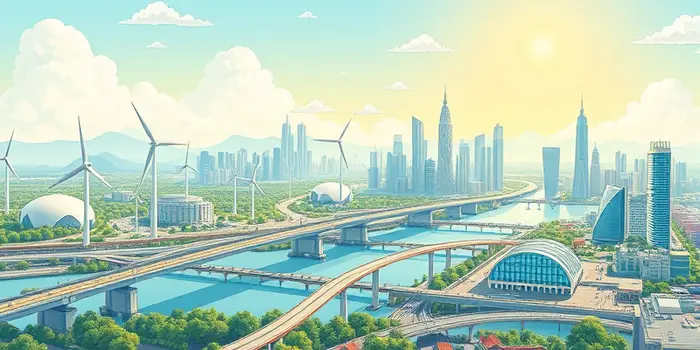
Global economies stand at a crossroads where strategic infrastructure investment can reshape our future. With a global annual infrastructure investment need of nearly 3.5% of GDP—about $4.2 trillion—each year for the next decade, the scale and urgency have never been clearer.
This article explores the magnitude of the infrastructure gap, the sectors poised for transformation, and the practical steps that investors, policymakers, and communities can take to seize these opportunities.
Over the next 15 years, the world requires a cumulative $106 trillion in infrastructure spending to modernize social, transport, energy, and digital assets. Current trends put us on track to invest around $79 trillion, leaving a shortfall of $27 trillion.
Two-thirds of this cumulative global infrastructure investment required through 2040 is concentrated in emerging economies, where both the need and the growth potential are greatest.
Infrastructure spending goes far beyond concrete and steel. It is a catalyst for economic expansion, social inclusion, and resilience in the face of climate change.
Every $1 million spent on infrastructure can generate a 1.5x GDP uplift over five years and create roughly 36,000 jobs. These figures underscore why underinvestment is one of the biggest risks to future growth.
The infrastructure landscape is evolving across multiple fronts, each with its own set of opportunities and challenges.
In the energy sector, $26–30.2 trillion is needed by 2035 to meet net-zero targets. That includes upgrades to power grids, storage facilities, and electrification systems. Europe alone must mobilize $110–150 billion annually for energy networks and storage.
Transport remains critical: roads, railways, ports, and airports underpin global supply chains. Latin America needs roughly 1.4% of GDP per year to eliminate bottlenecks, while India and China accelerate high-speed rail and urban transit projects.
Digital infrastructure demand is surging amid AI and cloud adoption. Tech giants are forecast to spend over $400 billion on data centers this year, placing strain on power and cooling systems worldwide.
Public budgets alone cannot close the gap. Private capital has become the linchpin of infrastructure finance, with unlisted assets under management growing from under $25 billion in 2005 to more than $1.5 trillion in 2025.
Deal volumes reached nearly $520 billion in H1 2025, led by renewables and digital expansions. Fundraising bounced back in 2024 with a 14% year-on-year increase, driven by core and value-add strategies that target both stable income and growth opportunities.
Investor sentiment is upbeat: 86% of professionals expect deal growth, especially in Europe and North America. Hybrid approaches that combine greenfield development with expansion projects are becoming the dominant playbook.
No investment is without risk. Rising interest rates, regulatory hurdles, and geopolitical tensions create headwinds. In the US, policy uncertainty has cooled some public allocations, even as data center and power infrastructure projects gain momentum.
Permitting delays, supply-chain disruptions, and skill shortages add complexity. Investors must navigate evolving environmental standards, community engagement requirements, and shifting political landscapes to secure returns.
Emerging economies carry two-thirds of the world’s infrastructure gap but also offer higher returns. Asia-Pacific faces a 2.5–3.1% of GDP annual shortfall, while Latin America’s gap is $150 billion per year.
Innovative financing, public-private partnerships, and risk-mitigation instruments are crucial to unlocking projects in these regions. Examples include green bonds in Southeast Asia and blended finance facilities in Sub-Saharan Africa.
Infrastructure investment is inseparable from sustainability goals. Renewables, resilient water systems, and climate-adaptive transport networks are non-negotiable if we are to meet the United Nations’ Sustainable Development Goals.
Failing to invest in resilient infrastructure risks exacerbating poverty, inequality, and environmental degradation. Yet this challenge presents a trillion-dollar opportunity for investors aligned with sustainable development.
Infrastructure sits at the intersection of economic growth, social progress, and environmental stewardship. As technology, finance, and policy converge, we stand on the cusp of a new era of innovation.
Practical steps include prioritizing public-private collaboration, deploying blended finance, and embracing digital tools like IoT and AI to optimize asset performance. By acting now, investors and societies can bridge the infrastructure gap and unlock generations of prosperity.
Ultimately, the decisions we make today will shape the built environment of tomorrow. Harnessing the power of infrastructure investment represents both a responsibility and an unprecedented opportunity to build a more connected, sustainable, and equitable world.
References





